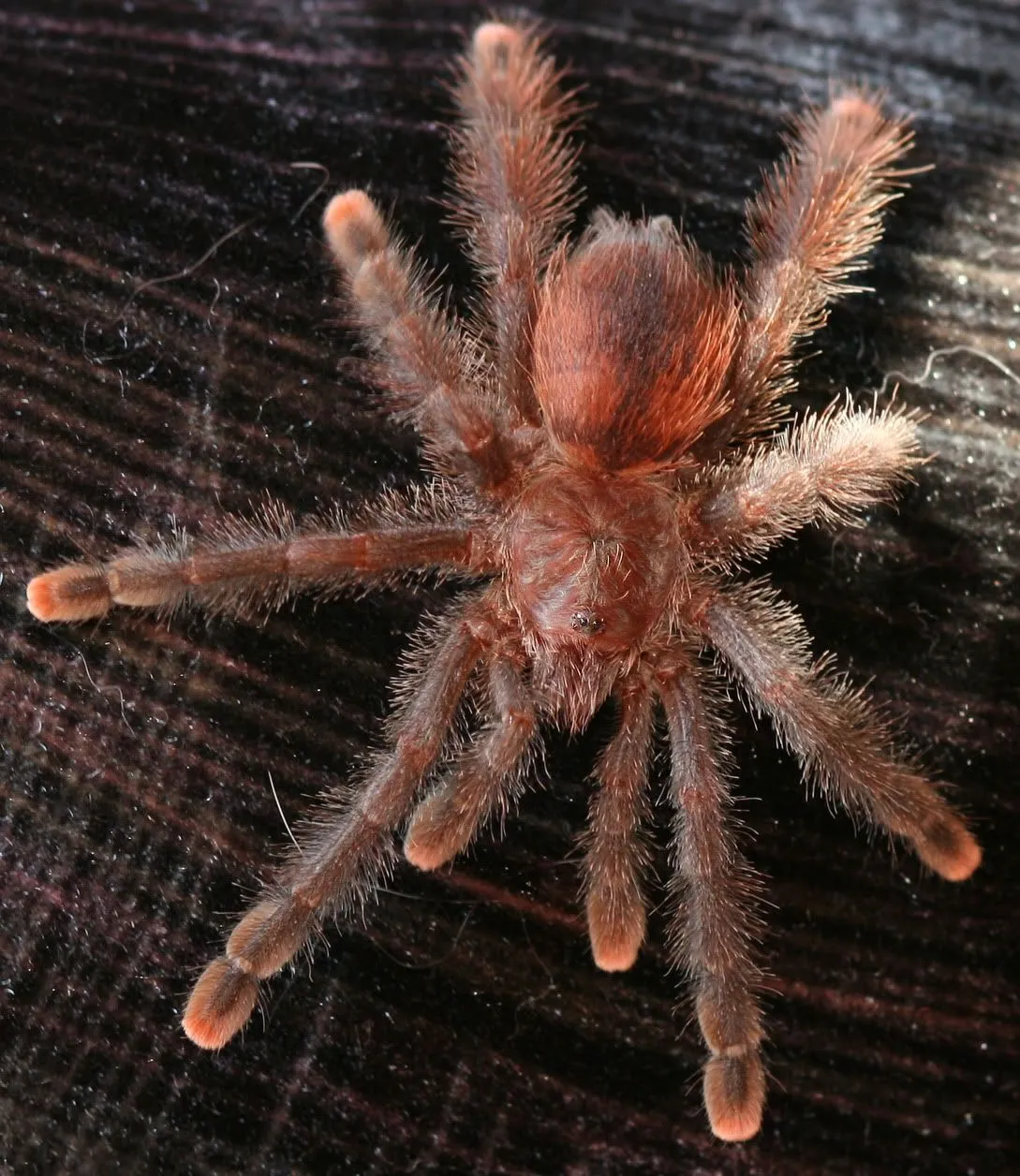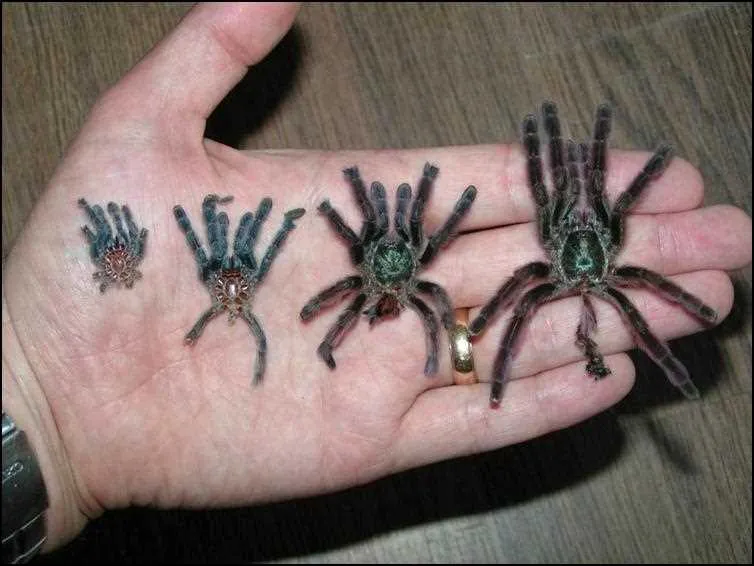The Pink Toe Tarantula (Avicularia avicularia) is a popular pet due to its docile nature and vibrant appearance. However, one of the first questions new owners ask is how to tell a male from a female. The differences aren’t always obvious, especially when the tarantulas are young, but several key characteristics can help you distinguish between them. This guide will explore five of the most important differences between male and female Pink Toe Tarantulas, helping you to better understand and care for your arboreal friend.
Size and Appearance Differences
Size and overall appearance can be key indicators. While it’s not always a definitive way to tell the gender, observing these aspects can provide clues. Keep in mind that individual tarantulas can vary, and these are general guidelines. The size and appearance differences become more pronounced as the tarantulas mature. Observing the size, especially after molting, offers valuable insights into the potential gender of the Pink Toe Tarantula.
Size Comparison
Generally, female Pink Toe Tarantulas tend to be larger and bulkier than males. This difference is usually noticeable as they reach adulthood. Females often have a larger leg span and a more robust body. A mature female can have a leg span of up to 5-6 inches or more, while males are typically smaller, with a leg span of 4-5 inches. However, size alone is not a reliable indicator, as variations exist. Furthermore, the size difference may not be apparent until the tarantulas have undergone several molts. In the early stages of life, size difference are negligible.
Coloration Differences

Coloration can also offer some clues, though it’s not a foolproof method. Both males and females display the characteristic pinkish hues on their toes, but some subtle differences might exist. Males may sometimes exhibit slightly duller colors or less vibrant pinks compared to females. However, this is highly variable and depends on factors like genetics and diet. Many Pink Toe Tarantulas, both male and female, will showcase the vibrant colors that make them so desirable as pets. Therefore, coloration should be used in conjunction with other identification methods to determine the gender of the tarantula. Observing coloration is just one piece of the puzzle in sexing a Pink Toe Tarantula.
Behavioral Differences
Behavioral differences can manifest between male and female Pink Toe Tarantulas. These differences can be related to their temperament and behaviors associated with their habitat. Some of these differences are related to their purpose in the lifecycle. These behavioral insights can provide additional clues about the sex of your tarantula. Remember that individual personalities can vary, but certain trends often appear.
Temperament
In general, Pink Toe Tarantulas are known for their relatively docile temperament, but subtle differences can exist. Males, especially as they approach sexual maturity, might become more restless and prone to wandering in search of a mate. Females tend to be more sedentary, staying closer to their established web and habitat. This is not a hard and fast rule, as individual personalities vary. These general behavioral tendencies can offer additional clues when trying to determine the sex of your Pink Toe Tarantula. Keeping an eye on their overall behavior will help you determine their gender.
Webbing and Habitat Preferences

The way a Pink Toe Tarantula webs its enclosure can provide insights. Females are typically more dedicated web spinners, constructing elaborate webs that serve as their home. They often create a more structured and extensive webbing system. Males, on the other hand, may web less or have a less structured web, especially as they mature and focus on finding a mate. They spend less time building and maintaining their web, and more time searching. If your tarantula has a well-established web, it might indicate a female, but this is not always definitive as individual behaviors vary.
Sexual Maturity and Lifespan
Understanding the molting cycle, the presence of spermathecae and pedipalps, and other signs of sexual maturity are critical for sexing a Pink Toe Tarantula. These factors often reveal the gender of your tarantula. The lifespan of a Pink Toe Tarantula also depends on the gender. Females generally live longer than males.
Molt Cycle
Examining the exuvia (shed exoskeleton) after a molt is a crucial method for sexing Pink Toe Tarantulas. This method becomes reliable as the tarantula approaches sexual maturity. The presence of spermathecae, a female reproductive organ, can be observed on the molted skin of a female. However, this method is only possible when the tarantula has reached a certain size and maturity level. For younger tarantulas, this method is not applicable. The molt cycle plays a significant role in the life of a tarantula and offers essential clues about the tarantula’s gender.
Spermathecae and Pedipalps

In mature females, the spermathecae (sperm storage organs) are visible on the underside of the exuvia. This is the most reliable method for sexing, but requires careful examination under magnification. Males, on the other hand, have pedipalps that appear different than those of females. Male pedipalps are used to store sperm and will have a bulbous appearance at their tips. This becomes most evident as the males approach maturity. These are the most defining characteristics. It’s best to consult with an experienced tarantula keeper or a veterinarian specializing in exotic animals if you are unsure of your tarantula’s gender.
Breeding Considerations
If you’re interested in breeding Pink Toe Tarantulas, knowing the sex of your tarantulas becomes crucial. Male Pink Toe Tarantulas are often introduced to the female’s enclosure for mating. After mating, the female will lay eggs. Therefore, the knowledge of the gender is essential for successful breeding. Successful breeding requires proper environmental conditions. The health and well-being of both the male and female tarantulas should be your top priority.
Conclusion
Identifying the sex of your Pink Toe Tarantula requires careful observation. While there’s no single foolproof method, combining observations of size, appearance, behavior, and the examination of the exuvia can provide a good indication. The best approach involves a multi-faceted examination. Consider consulting with an experienced tarantula keeper or a veterinarian specializing in exotic animals for the most accurate determination. By understanding these key differences, you can better care for your Pink Toe Tarantula and appreciate its unique characteristics.
